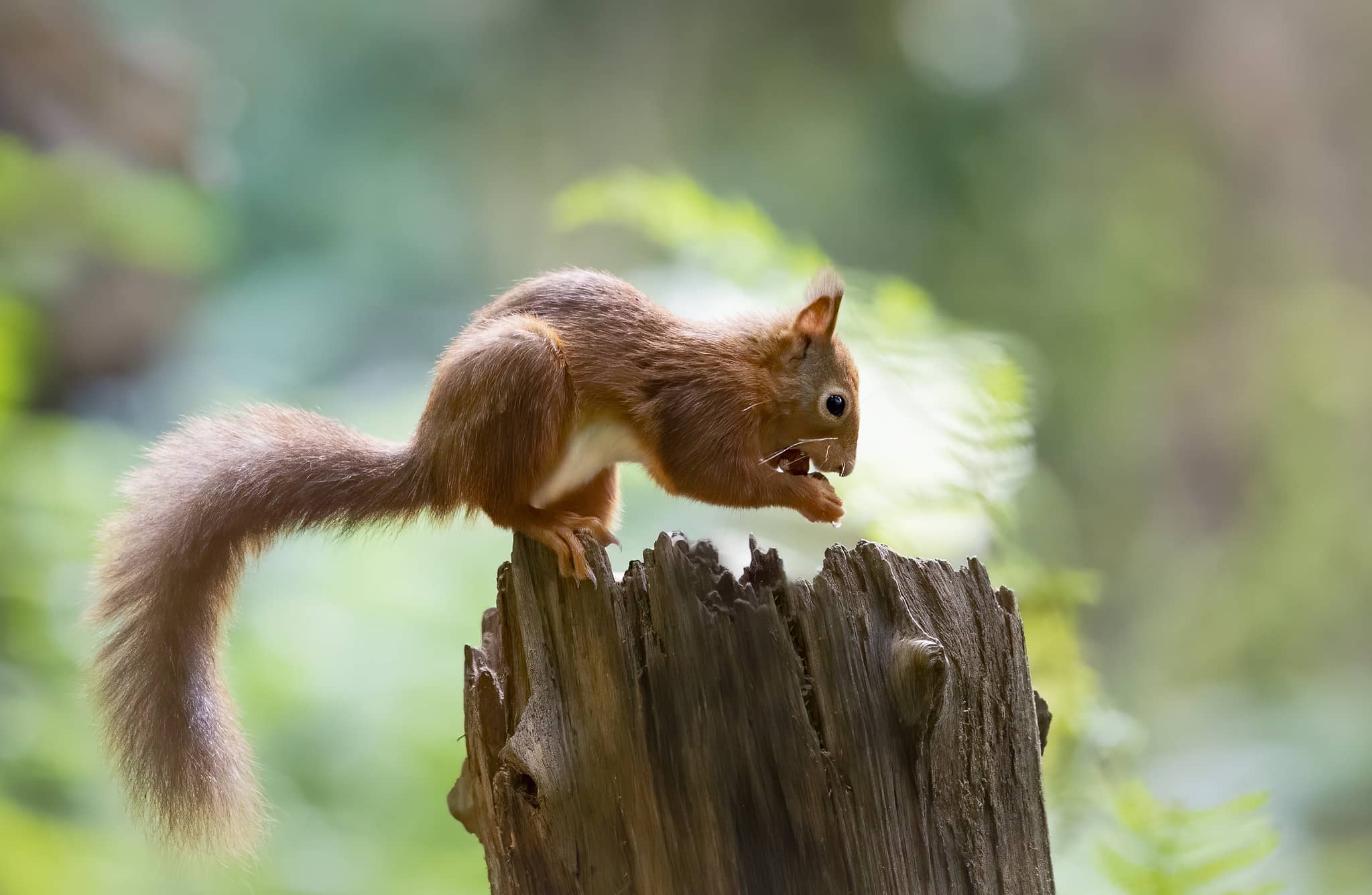To mark Red Squirrel Appreciation Day (Saturday 21st January) the Red Squirrel Survival Trust has announced that Alan Titchmarsh, Britain’s most loved gardener, has joined their battle to save one of our most endangered species.
Fertility control of greys
A method of fertility control that will significantly reduce Britain’s 2.7 million alien grey squirrel population (not on the Island, as we don’t have any here) is entering the final stages of research which will be followed by landscape field trials and, it is hoped, it will be commercially available shortly after.
Planting to feed native reds
Alan will be working to encourage gardeners to plant trees and shrubs which will help feed our native red squirrels that will repopulate areas vacated by the declining grey population.
Alan is an ambassador of the Red Squirrel Survival Trust and together they have identified these vital food sources.
Calling on gardeners
The initial aim is to encourage gardeners in and around areas that have existing red squirrel populations to plant these growing larders. The red population will extend and, as this happens, more gardeners will be encouraged to plant out in their support.
RSST’s research partners within the UK Squirrel Accord have developed a special dispenser that can only be accessed by grey squirrels to contain the fertility control agent. These will be installed in major woods and forests across the UK and will also be available to private garden owners.
Fawcett: Reds will quickly re-populate areas vacated by the greys
Red Squirrel Survival Trust’s Vanessa Fawcett, said,
“It is likely that the grey squirrel population will be significantly reduced as a result of people implementing the fertility control programme. Many greys carry a pox that is harmless to them, but fatal to reds and we try to prevent them mixing.
“The reds will quickly re-populate areas vacated by the greys but we have to ensure a plentiful source of food and this is where Alan has been extremely helpful.”
Titchmarsh: What to plant
Alan said,
“The most popular growing food sources are acorns, walnuts, hazelnuts, conifer seeds, holly berries, crab apples, wild and bird cherries, Bullace, Dogrose and Guelder rose hips, blackberries and raspberries. They also love sunflower hearts.
“These trees and shrubs are suitable for gardens of all sizes and by planting them now they will grow and mature and be ready for when the red squirrels come home.”
He added,
“A plentiful supply of appropriate food and fresh water is essential for the reds to breed. We need a rapidly growing population to repopulate areas of the country that have not seen them for half a century. This is an ongoing programme that, we hope, will ultimately expand across the whole of the UK.
“Red squirrels have lived here for more than 10,000 years and were our only squirrels. That was until the mid 1800s when a small number of grey squirrels form America were released in a handful of parks and country estates as a novelty species. The rest is history but we are now hoping to reverse this.”
News shared by Graham on behalf of Red Squirrel Survival Trust. Ed
Image: Caroline Legg under CC BY 2.0





